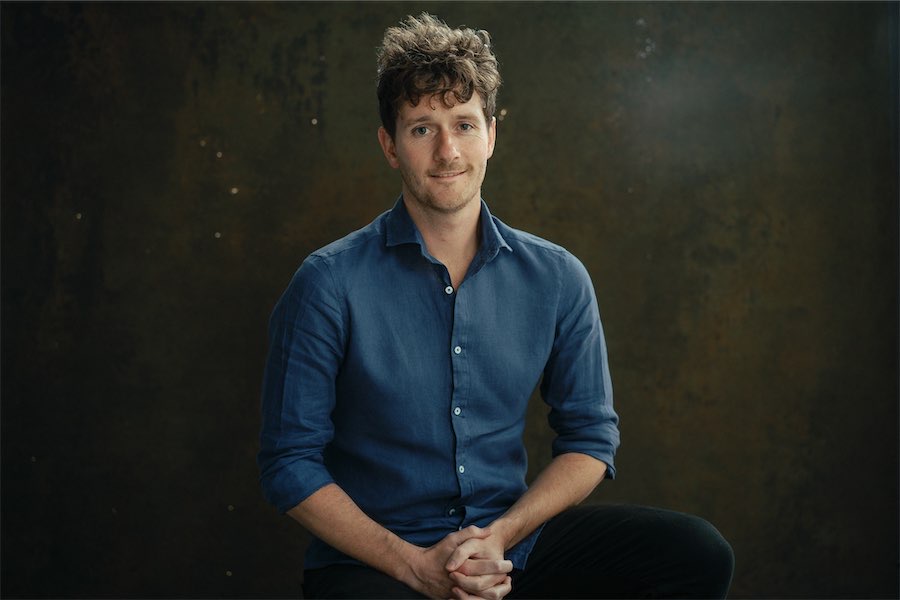
Music / “Tales of Hoffmann”, Opera Australia. At Sydney Opera House until July 22. Reviewed by HELEN MUSA.
OPERA Australia’s new production of Jacques Offenbach’s opéra fantastique, “Tales of Hoffmann”, will not go down in history as one of its more memorable productions, but it is certainly one of its more expensive.
Complete with dancing devils, prancing rodents, ballet dancers, showgirls, a puppet macaw and two significant break-apart props, it looks and feels expensive, even if many of the costumes by Carla Teti seem tacky.
That impression can be put down to the fact that the entire suite of stories – told in the Nuremberg equivalent of a pub by the drunken poet Ernst Theodor Amadeus Hoffmann (a real person) — are presented by Italian director Damiano Michieletto as an alcoholic dream, or perhaps nightmare.
Nobody could query the quality of the music, conducted by Guillaume Tourniaire, sensitive to every mood in the cavalcade of scenes.
Nobody could complain about the rich tenor voice of young Peruvian tenor Iván Ayón Rivas, although it was hard to believe him when he played the old man role.

And above all, nobody could doubt the extraordinary prowess of Australian soprano Jessica Pratt in the roles of four different women, for the opera is essentially a vehicle for singers possessed of her coloratura brilliance. She must from now on be the go-to person for this role.
“Hoffmann” is famous musically for two parts – “Les oiseaux dans la charmille,” (known as “The Doll Song”) with its virtuosic complexity, is perfectly suited to Pratt’s voice, and the gentle music of the barcarolle “Belle nuit, ô nuit d’amour” – totally foreign to the scene that follows in which the courtesan Giulietta steals the poet’s image and by inference, his soul.
As exquisite as well, there is the Act II love duet between Hoffmann and the dying singer, Antonia, “C’est une chanson d’amour”.
Great beauty, then, but also a nasty, misogynistic flavour to the production’s treatment of Hoffmann’s lady-loves – a doll, a victim and an up-market whore.
If it’s beginning to sound confusing, it is, and my companion, who hadn’t read the program notes, most of the night was completely baffled.
It would be hard to imagine a more ridiculous series of tales that the ones the drunken poet Hoffmann relates to his fellow drinkers at the Austrian equivalent of the local pub but in fact, librettist Jules Barbier, based his text on three short stories by the real-life Hoffmann.
Something of a hero to his fellow-drinkers because of his storytelling, Hoffmann embarks on a night of yarns that becomes the opera, loosely connected by his presence in all stories and wrapped up at the end with his explanation that the women of his dreams, Olympia, Antonia, and Giulietta, are really aspects of the same person, Stella.

More ridiculous than the plot of Mozart’s “Cosi fan tutte”, which has the advantage of telling a human story, Hoffmann’s absinthe-infused dreams (there a glass of green liquor onstage throughout) lead to something more like a disjointed series of fantasies verging on the nightmarish.
A mysterious character called The Muse, played by Sian Sharp dressed as a green fairy (a joke perhaps on the name of the most famous brand of absinthe) scatters stardust across the various scenes, also turning herself into Hoffmann’s best-mate Nicklausse, a pants role sung by mezzo-soprano Agnes Sarkis.
At the centre of the story are Hoffmann’s inept effort to find love, first with a mechanical doll created by a scientific genius Dr Coppelius, secondly, with a terminally-ill opera singer and thirdly with a notorious courtesan. None appears to be a real relationship, making the protagonist look like a fool.
To make it all the more confusing, bass-baritone Marko Mimica as Hoffmann’s nemesis appears in four different guises, himself popping up as Coppelius, Dapertutto, Dr Miracle and Lindorf. I know this because I had read Opera Australia’s notes.
To be sure, this production was full of flashy coups de théâtre, with quadratic equations turned into theatre, the mechanical doll’s artificial brains shockingly dashed to the floor, a similar fate for a cello (the props department was working hard) and Pratt as the courtesan appearing in a voluptuous golden gown.
But it was glaringly obvious throughout that director Damiano Michieletto decided that his best option was to treat the whole thing as a fantastical joke, aided by Chiara Vecchi, whose choreography was clunky and involved a totally irrelevant ballet school sequence (Antonia of Act II is the daughter of a singer, not a ballet dancer) where white cellos were incorrectly played, making her adult dancers seemed inept.
Maybe it was all part of the nightmare.
Who can be trusted?
In a world of spin and confusion, there’s never been a more important time to support independent journalism in Canberra.
If you trust our work online and want to enforce the power of independent voices, I invite you to make a small contribution.
Every dollar of support is invested back into our journalism to help keep citynews.com.au strong and free.
Thank you,
Ian Meikle, editor




Leave a Reply